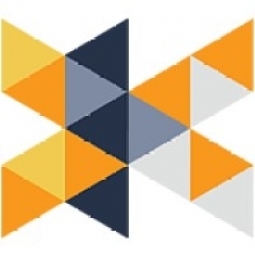Customer Company Size
SME
Region
- America
Country
- United States
Product
- Kuebix TMS
- NetSuite ERP
Tech Stack
- Freight Pay and Audit functionality
Implementation Scale
- Enterprise-wide Deployment
Impact Metrics
- Cost Savings
- Productivity Improvements
Technology Category
- Functional Applications - Enterprise Resource Planning Systems (ERP)
- Functional Applications - Transportation Management Systems (TMS)
Applicable Industries
- Education
Applicable Functions
- Logistics & Transportation
Use Cases
- Supply Chain Visibility
- Inventory Management
Services
- System Integration
About The Customer
Pioneer Valley Books is a company that offers a wide variety of fiction and nonfiction books and other resources for Reading Recovery, primary classroom, and literacy teachers at affordable prices. Their mission is to provide engaging stories and teaching materials that help children to develop strong literacy skills and a love of reading. Their operations are based in Northampton, Massachusetts with additional shipping and storage in nearby Florence, MA. The company ships domestically and internationally, and like many organizations, has considerable freight spend to manage efficiently in order to keep costs down and value to customers high.
The Challenge
Pioneer Valley Books was facing a challenge with their previous process which was highly manual and didn’t allow for rating with multiple carriers. Their freight spend was only understood on a macro level and they couldn’t audit every invoice for discrepancies due to time constraints. The company was leveraging stand-alone shipping apps, rate aggregators tied to specific carriers, and map-based platforms intermittently. This meant the logistics team at Pioneer Valley Books needed to copy a lot of data back and forth manually, wasting time and limiting the amount of rate comparison possible. As the company’s LTL and parcel freight began to expand rapidly, their home-grown solution wasn’t flexible enough for their long-term needs.
The Solution
Pioneer Valley Books implemented Kuebix TMS as their one source for domestic shipping as well as an integration between NetSuite and Kuebix and automated Freight Pay and Audit functionality. The logistics team at Pioneer Valley Books quickly realized that LTL providers were willing to competitively bid against parcel carriers for their freight. In order to efficiently compare rates across multiple carriers and modes for each shipment, Pioneer Valley Books needed a single system from which to operate. The answer came in the form of Kuebix in May of 2018. Soon after Pioneer Valley Books implemented Kuebix TMS as their transportation management solution, their Warehouse Manager rapidly began adding carriers for rate comparison. They were able to have one carrier come in, and without blinking an eye, undercut the historically used carrier’s rates by 10% across the board. This would have been impossible without Kuebix, as Kuebix seamlessly connected with the carrier without a customized integration.
Operational Impact
Quantitative Benefit

Case Study missing?
Start adding your own!
Register with your work email and create a new case study profile for your business.
Related Case Studies.

Case Study
Revolutionizing Medical Training in India: GSL Smart Lab and the LAP Mentor
The GSL SMART Lab, a collective effort of the GSL College of Medicine and the GSL College of Nursing and Health Science, was facing a challenge in providing superior training to healthcare professionals. As clinical medicine was becoming more focused on patient safety and quality of care, the need for medical simulation to bridge the educational gap between the classroom and the clinical environment was becoming increasingly apparent. Dr. Sandeep Ganni, the director of the GSL SMART Lab, envisioned a world-class surgical and medical training center where physicians and healthcare professionals could learn skills through simulation training. He was looking for different simulators for different specialties to provide both basic and advanced simulation training. For laparoscopic surgery, he was interested in a high fidelity simulator that could provide basic surgical and suturing skills training for international accreditation as well as specific hands-on training in complex laparoscopic procedures for practicing physicians in India.

Case Study
IoT platform Enables Safety Solutions for U.S. School Districts
Designed to alert drivers when schoolchildren are present, especially in low-visibility conditions, school-zone flasher signals are typically updated manually at each school. The switching is based on the school calendar and manually changed when an unexpected early dismissal occurs, as in the case of a weather-event altering the normal schedule. The process to reprogram the flashers requires a significant effort by school district personnel to implement due to the large number of warning flashers installed across an entire school district.

Case Study
Implementing Robotic Surgery Training Simulator for Enhanced Surgical Proficiency
Fundacio Puigvert, a leading European medical center specializing in Urology, Nephrology, and Andrology, faced a significant challenge in training its surgical residents. The institution recognized the need for a more standardized and comprehensive training curriculum, particularly in the area of robotic surgery. The challenge was underscored by two independent studies showing that less than 5% of residents in Italian and German residency programs could perform major or complex procedures by the end of their residency. The institution sought to establish a virtual reality simulation lab that would include endourological, laparoscopic, and robotic platforms. However, they needed a simulator that could replicate both the hardware and software of the robotic Da Vinci console used in the operating room, without being connected to the actual physical console. They also required a system that could provide both basic and advanced simulation training, and a metrics system to assess the proficiency of the trainees before they performed surgical procedures in the operating theater.

Case Study
Edinburgh Napier University streamlines long-distance learning with Cisco WebEX
• Geographically dispersed campus made in-person meetings costly and inconvenient.• Distance-learning programs in Malaysia, India, and China required dependable, user-friendly online tools to maximize interaction in collaborative workspaces.• Virtual learning environment required a separate sign-in process, resulting in a significant administrative burden for IT staff and limited adoption of collaboration technology.

Case Study
8x increased productivity with VKS
Before VKS, a teacher would spend a lot of time showing a group of 22 students how to build a set of stairs within a semester of 120 hours. Along with not leaving the teacher much time to provide one-on-one support for each student to properly learn carpentry, it also left a considerable amount of room for error. Key information would be misinterpreted or lost as the class was taught in the typical show-and-tell way.

Case Study
Scalable IoT Empowering GreenFlex's Sustainable Growth
GreenFlex, a company that supports sustainable development, decarbonization, and energy efficiency, faced several challenges in its quest to expand its business. The company needed to deploy a robust and sustainable IoT technology to support its growth. It was crucial for them to monitor and control devices at customer sites in a safe and reliable manner. They also needed to integrate devices across a range of communication protocols and gather and act on data to meet efficiency targets. GreenFlex had previously built IoT capabilities into its digital platform, GreenFlexIQ, to monitor and manage customer sites remotely. However, they soon realized that they needed a new platform to support their ambitions. They needed a platform that could scale to connect more devices for production management and make it easier for the operations team to manage devices in the field.







